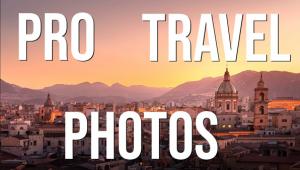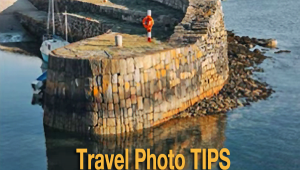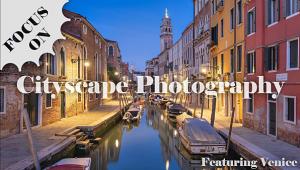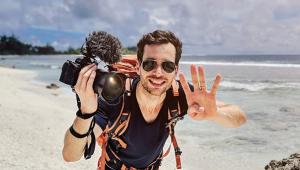So You Want To Be a Professional Travel Photographer?: Business Survival Tips
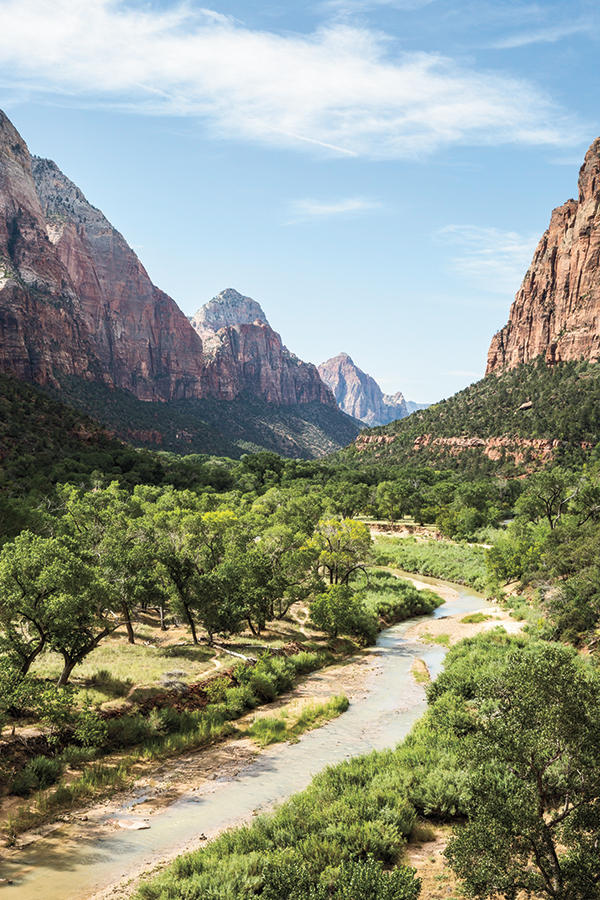
Getting work as a travel photographer has never been easy. Today, factors of the economy and technology have added obstacles that require even more knowledge and planning. The five travel photographers we interviewed work with clients ranging from editorial to corporate and advertising.
Shutterbug: What percentage of your travel photography is licensed for stock vs. assignment and what type of clients do you usually work with? Also, how do you feel about pursuing travel photography/writing assignments?
Dennis Cox: Currently I am the official photographer and a featured writer for AllThingsCruise.com. Except for a recent writing and photography assignment for them, I have not done assignments for about a dozen years. When I stopped taking assignments, I then concentrated on producing stock with licensing to magazines, corporate publications, calendar publishers, textbook publishers, tour companies for brochures, and for photo books. I have recently been making my newest transition to a new style of travel photographs which I call “photo art paintings,” either shot in camera as an “HDR painting” or by converting existing images, especially iconic travel subjects, with software that produces a variety of painting styles, such as oils, pastels, watercolors, etc. I have been marketing these as stock for publication on my website, through ImageBrief, for prints through FineArtAmerica.com, and with my own line of fashion designs through the online custom marketer VIDA Voices Design Studio.
Cindy Miller Hopkins: About 60 percent of my travel is freelance and 40 percent is assignment work. Most of my clients are travel- and tour-based companies ranging from bus tours in Europe and the US to small expedition ships that visit very remote locations. While I often teach basic photo workshops on ships, my main job is to provide marketing images for travel brochures, websites, and marketing materials. I lead a few photo tours a year for private clients, photo and nature associations (like NANPA, the North America Nature Photography Association) as well as partner with other photographers in leading photo tours. That being said, about 95 percent of all my images are marketed via agents as stock photos. About 70 percent of my freelance stock images end up in textbooks, travel brochures, guidebooks, or magazines. Another 20 percent go to consumer products like calendars, posters, etc., and the remaining balance are sold for things like TV spots, DVDs, and specialty sales.
Paul Sivley: One hundred percent of my work is for editorial and commercial assignments so my clients are typically magazines and client direct. I love to write and photograph, so I welcome assignments to do both.
Stephanie Hogue: Ninety percent of our work is for stock and retail print sales. Pursuing travel photography is a dream come true. Though it has always been necessary to be completely dedicated to it to be successful, in this day and age it is even harder to stand out when there are so many photographers and digital photography has increased the competition.
Lisa Corson: A little over half of my income comes from travel photography and the rest is mostly from interiors/architectural photography. About 25 percent of my travel photo income is from stock sales; 75 percent is from assignments. And of the assignments, about one-third of that is additional space rates from Time Inc. assignments, which are going away under the new contract as of 2016. I have never done any travel writing.
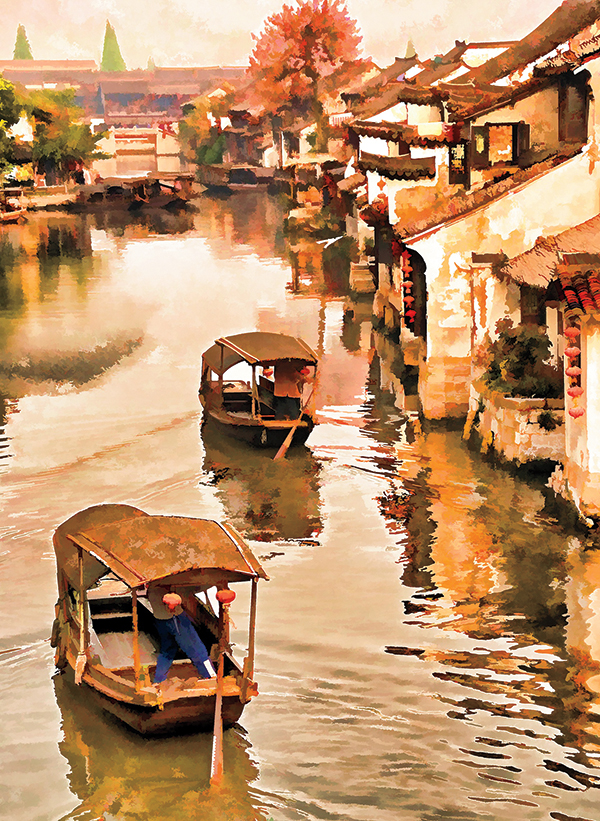
SB: For marketing results, what seems to work best for you: using the traditional marketing (direct mail, ads, websites) or online marketing tools (e-mail blasts, blogs, Facebook, social media) and how often do you contact clients?
Paul Sivley: For promoting trips I lead, I use online tools such as e-newsletters and social media. It is the same for courses I’ve taught on travel photography. For editorial marketing, I rely on my website, with selected images sent via Dropbox.
Lisa Corson: I use direct mail, e-mail blasts, and social media. I find that personal e-mails to prospective clients deliver the best, most direct results. I am also a WonderfulMachine.com member. Their website has member photographer listings by location and specialty. I have not been on a regular schedule of contacting clients, but I plan to put that into effect this year. I think e-mail updates every other month and direct mail four times a year will be my goal.
Cindy Miller Hopkins: I do some direct mailing but only for private tours or safaris when I’m leading the trip. Since a lot of my travel takes me to remote destinations without Internet service, I don’t even have a webpage of my own. No time to maintain it or follow up on inquires. I’m very lucky as most of my clients come to me through word of mouth.
Dennis Cox: I once did regular direct mail campaigns, but I’m currently not aggressively marketing other than recently updating my website and actively promoting on Facebook. I have produced a couple of books of “photo art prints,” one of Chinese subjects and the other of world travel, which I can send to interested designers as the word gets out and as interest grows in this new direction.
Stephanie Hogue: We utilize ads in local magazines but mostly rely on Facebook, Instagram, and a quarterly e-mail newsletter. Our best advertising is our retail location on Main Street in our historic downtown area. We also nurture relationships in the community and are involved with assisting in marketing our city. We work closely with the visitors and convention bureau, the downtown merchants association, and the mayor’s office.

SB: What skills or areas of expertise (other than photography) do you think a travel photographer has to develop for a successful business model?
Dennis Cox: I’m skeptical that there is a successful business model any longer for a photographer strictly doing travel. While it was possible to get by doing just travel in the past, I always believed in having as many streams of income as possible in addition to doing travel stock and/or assignments. In the past that included doing business/corporate assignments, marketing China photos by Chinese photographers as well as my own through ChinaStock, and maintaining a very profitable photo tour business.
Paul Sivley: You need a strong set of sales and marketing skills, interpersonal skills, an ability to build and sustain trust, and a willingness to serve the interests of your client. You need to say “no” to clients who set off red flags and be fine with losing business based on price or client personality issues. You will need to deal with very diverse people. I believe my background in politics before working as a pro photographer has helped me in these areas and led to greater success in the photography industry.
Stephanie Hogue: I think it is imperative to have great business skills. Unless it is a hobby for you, making a living as a travel photographer requires strict discipline and long hours to make sure that the business is profitable.
Lisa Corson: Strong organizational skills are essential. You have to make sure you have everything you need for a shoot (gear list, shot list, location/subject contact info, schedule, travel, lodging). What will the weather be like? When will the sun set? What’s the optimal time to be at a certain location? Is a town decorated for Christmas, but the story is running in May? I sometimes get incomplete or incorrect info for a shoot and it’s really up to me to make sure I ask all the right questions and do my own research beforehand.
Cindy Miller Hopkins: I think the most important thing is to develop people skills. There are a lot of very talented photographers out there, but if you can’t keep the clients or their passengers happy you are not going to get hired.
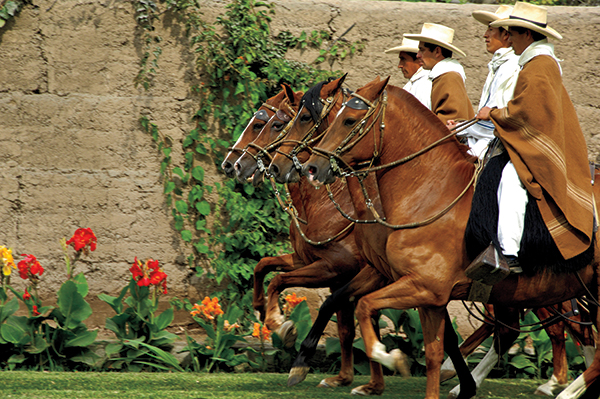
SB: Photographers interviewed for this column have a wide range of experience and opinions, what advice do you have for those looking at getting into travel photography—pitfalls to avoid or opportunities to pursue?
Stephanie Hogue: The simplest advice is still very relevant: do a great job, return phone calls, underpromise and overdeliver, and never become complacent. Always continue to learn and strive to be better. But, I also think with digital photography and social media, there are actually more opportunities than ever to make a statement about your work and create your own following, thus bypassing traditional publishers and outlets.
Dennis Cox: Seriously, I wouldn’t encourage anyone to be a travel photographer since most of the current veteran ones I know are very discouraged at the loss of magazine markets and the decline in viable stock fees. However, I wouldn’t discourage anyone either if they really want to do it badly enough since travel is too alluring. It would require good business practices, flexibility to think outside the box by imagining new marketing possibilities, and a resourcefulness to make things happen.
Cindy Miller Hopkins: Be willing to start at the bottom. Not everybody gets to start with assignment work to Egypt or Zambia. You would not believe how many photographers come to me and say “I want to do what you do…” and two weeks later turn down offers because they are not exotic enough. You never know what other jobs that client might have on their list. Take the senior bus tour to Branson, Missouri, do a great job, and you might be pleasantly surprised that the next trip they offer you is something more exciting. Don’t take jobs you’re not qualified for because you are desperate for work. It will come back to bite you!
Lisa Corson: There is a lot of travel photography out there right now. When I’m shooting, I am always trying to make photos that I haven’t seen before. Maybe it’s about getting access that not everyone has. That can come from my editor or just from approaching people when I’m out shooting to ask if I can photograph them or their business. Or sometimes it takes going back to the same location repeatedly over the course of a couple of days to see how it changes. I dig in as much as possible in the time that I have. So, my advice would be to look at the other work that’s out there, but then go out and tell your own story.
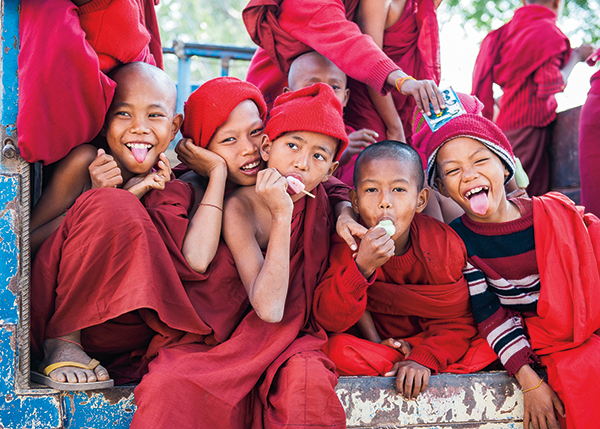
Paul Sivley: I have 11 good suggestions.
1. Know what you need to earn and stick to your price. You’ll never get more than the first price you give a client—give them cheap and they’ll expect it thereafter.
2. Know that international travel can be tiring and not all glory.
3. Have a passion for tramping through dirty fish markets and for making connections with people with whom you can’t communicate.
4. Give the customer what he/she wants, but don’t mimic trends in imagery, i.e., the bleached out shooting into the sun lifestyle shot. Add something unexpected of your own taste once you’ve gotten what the client wants.
5. Be crystal clear about what the client wants even if you’ve worked with them extensively. Ask them what they expect to walk away with every time.
6. When you think you’ve shot a subject, look again, change your body position/height, move yourself higher/lower.
7. Be able to just sit and wait for images to come to you in great light.
8. Wear clothing that isn’t attention grabbing when shooting. Fit the environment you are in.
9. Get great insurance for your equipment for when you drop it or have it taken by Zimbabwean police.
10. Having a long contract that you give the customer is a good thing (offer yours and try to avoid taking theirs). The language should reflect anything and everything that can be misunderstood, assumed, or otherwise forgotten.
11. Don’t assume your friends will be the easiest clients to work with.
Resources
Lisa Corson: lisacorsonphotography.com
Dennis Cox: denniscox.com
Stephanie Hogue (Latitudes Fine Art Gallery): latitudesfineart.com
Paul Sivley: paulsivley.net




